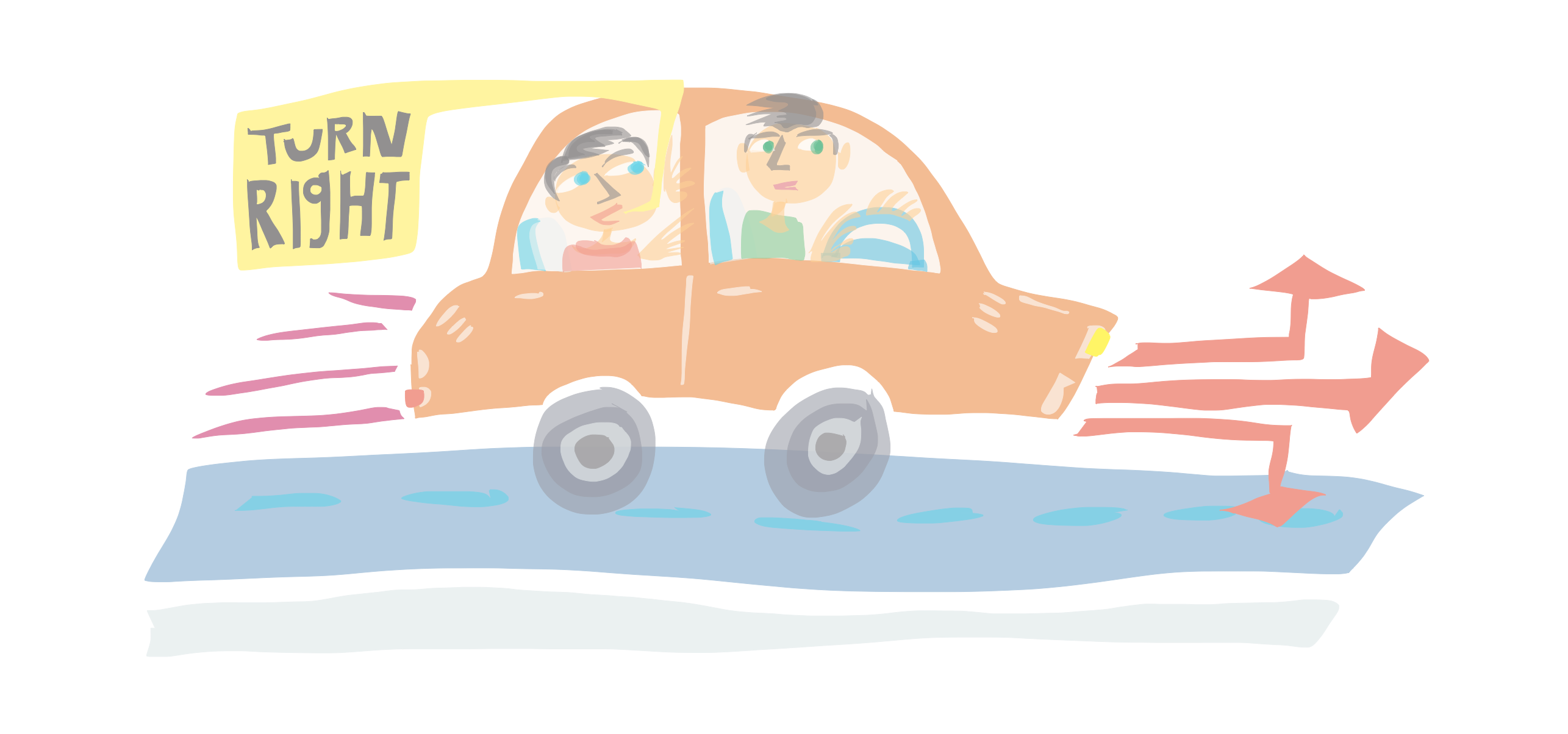
Backseat code driver

Listen your child’s day while applying systems thinking
February 10, 2019
Keep the Environment Green with Your Little One
February 18, 2019Let Your Kid Command Your Driving
Are you ready for another Computational Adventure? This week, it's the Backseat Code Driver.
How long?
30 minutes
What's the Learning Outcome?
Logical Reasoning
Sequencing
Optimization
Conditionals
What age is it for?
5-12 year olds
What You'll Need
- You and your kid
- Car
- A familiar-enough route that you're driving
- Enough free time that you can make some wrong turns
How to Play
The next time you're on a familiar route with your child, drive it computationally.
Tell your child: You must be the guide to get use to the destination.
But they have only have 5 commands to use: Straight, left, right, stop, go. Try (while following traffic laws) to drive exactly as they command.
Step 1: The Great Power Shift

Before starting your car engine, tell your child -- You are now the driver (though only from the backseat)! You have the power to command this car. I will drive only based on what you say.
Lay down the basic rules. Your kid has only five things they can say. STRAIGHT. LEFT. RIGHT. STOP. GO.
And, remind them -- if you tell me to do anything unsafe or illegal, I will override your commands. So be careful!
Step 2: We're In Motion

Start the engine.Tell your child where you are trying to go. The destination is set!
Now the challenge is theirs. How can they use their five commands to get you there?
Help them talk it through -- so they can try out what will happen depending on their commands. You follow the instructions, and say back out loud what you are doing based on what they told you.
Step 3: Getting the Route Right

As they get in the rhythm of the commands, keep following along. If they take you an incorrect route, follow it -- but also ask them: Is this the right way? What did you tell me to do? Are you sure that is the right command to give?
Try not to override their commands unless it's dangerous or illegal.
If they take you the wrong route, encourage them to rethink their plan. Ask them, how can we go back? What is another thing you could tell me to do, to get to the right direction?
Step 4: What Just Happened?

When you arrive your destination, ask your child about their Backseat Driving. Was it easy? Was it hard? Were the 5 commands enough?
Also, challenge them to think through what they could do to improve their sequence of commands. Was it the shortest route to arrive the destination? Is there another way to arrive the destination?
They will start thinking in a sequence of tasks. And if they've made mistakes they've had to correct, even better! They can learn to experiment and to iterate. Even if you get the command sequence wrong the first time, how do you rethink the process to make a better set of commands -- to have the automated driver (AKA the parent) do exactly what you're intending them to do?

Bekir M.
PhD in Education
Originally from Turkey, then Pittsburgh, now California
I got my PhD in educating kids how to code, and how to think computationally so they can thrive in STEM. I have been researching how Offline Activities -- where kids aren't in front of a screen, but are playing in the real world -- can help kids get core concepts of coding.
Learning Outcome
Your kid, as the Backseat Code Driver, will have to think like an engineer. They will have to use their previous experiences to understand their surroundings, and to model a path to follow. They'll have to sequence their commands to you, so they have you do what they intend. And as you talk with them about the trip, you can help them understand the consequences of their commands to improve their problem solving skills.
Standards
Next Generation Science Standards K-2-ETS1-1. Ask questions, make observations, and gather information about a situation people want to change to define a simple problem that can be solved through the development of a new or improved object or tool.
